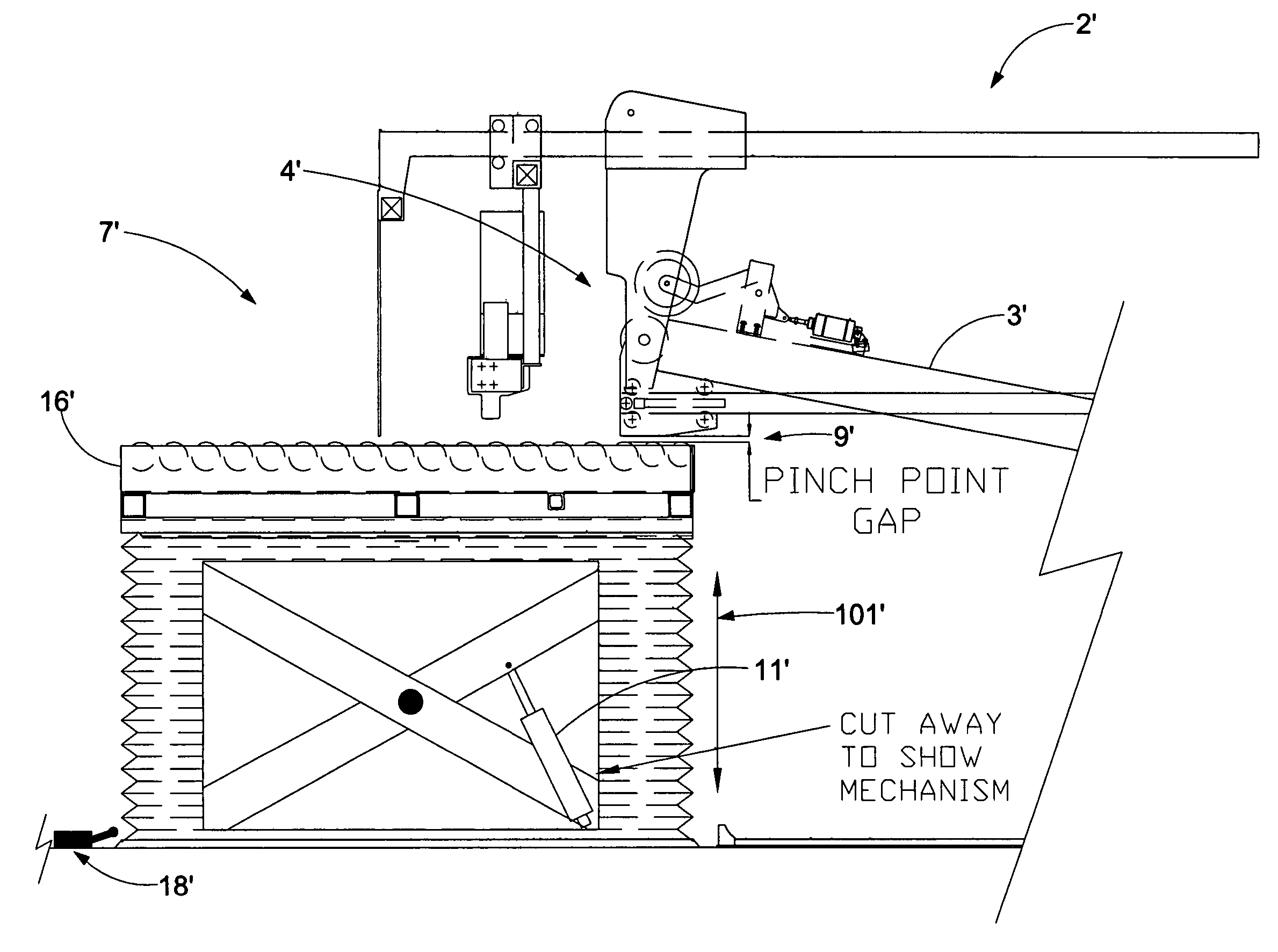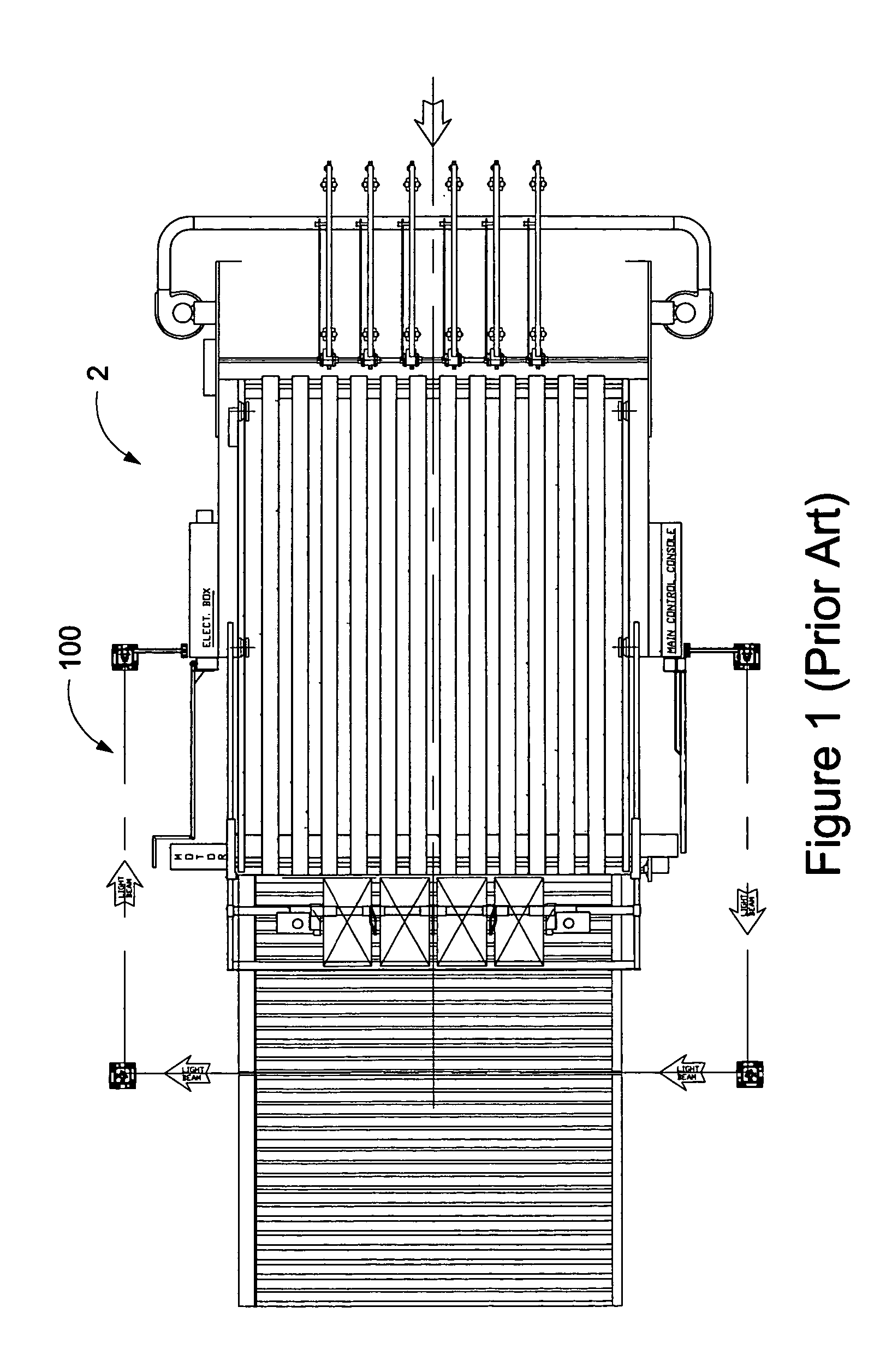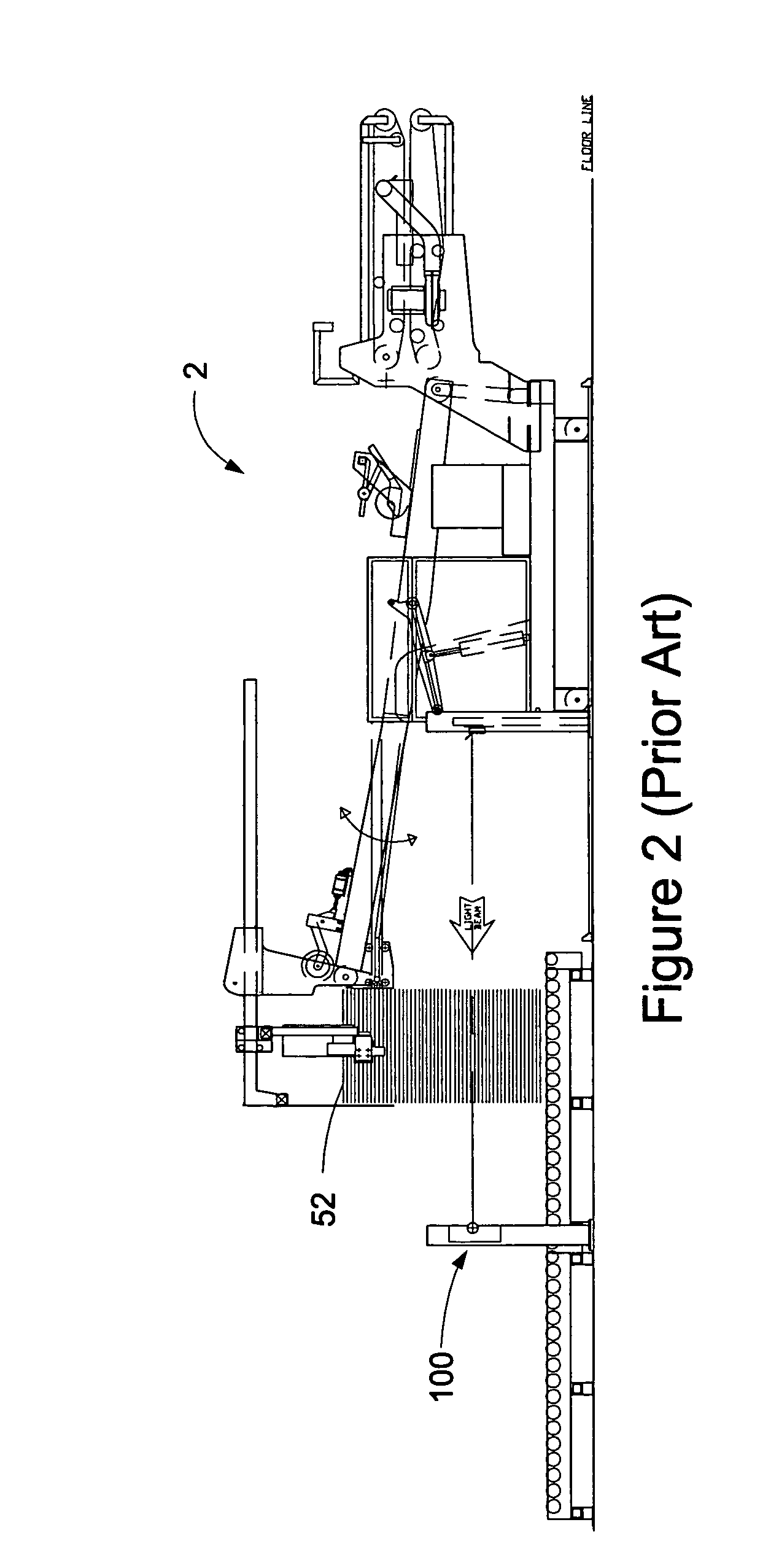Load change safety system
a safety system and load change technology, applied in the direction of mechanical conveyors, thin material processing, article separation, etc., can solve the problems of not meeting the guidelines of international safety standards such as redundancy and self-testing, and requiring too much recovery time to use as a safety solution,
- Summary
- Abstract
- Description
- Claims
- Application Information
AI Technical Summary
Benefits of technology
Problems solved by technology
Method used
Image
Examples
Embodiment Construction
[0062]In the present invention, a load change safety system 1–1′″ is provided for a sheet stacker 2,2′ in which a variable pinch point gap 9,9′ is created during the load change cycle 56 due to the motion of the stacking deck 3,3′ and / or the conveying sheet material removal system 7,7′. The variable pinch point gap 9 can be created with an “upstacker” type of sheet stacker 2 where the stacking deck 3 moves in a generally upward direction, while the conveying sheet removal system 7 remains fixed, as illustrated in FIGS. 5, 6, 7&8. Alternatively, the variable pinch point gap 9′ can be created with a “downstacker” type of sheet stacker 2′ where the stacking deck 3′ remains fixed, while the conveying sheet removal system moves in a generally downward direction, as illustrated in FIGS. 9, 10, 11&12.
[0063]The sheet stacks 6 are first created as the sheet material 5 exits the discharge end 4,4′ of the stacking deck 3,3′ and the variable pinch point gap 9,9′ increases. This increase in said...
PUM
 Login to View More
Login to View More Abstract
Description
Claims
Application Information
 Login to View More
Login to View More - R&D
- Intellectual Property
- Life Sciences
- Materials
- Tech Scout
- Unparalleled Data Quality
- Higher Quality Content
- 60% Fewer Hallucinations
Browse by: Latest US Patents, China's latest patents, Technical Efficacy Thesaurus, Application Domain, Technology Topic, Popular Technical Reports.
© 2025 PatSnap. All rights reserved.Legal|Privacy policy|Modern Slavery Act Transparency Statement|Sitemap|About US| Contact US: help@patsnap.com



